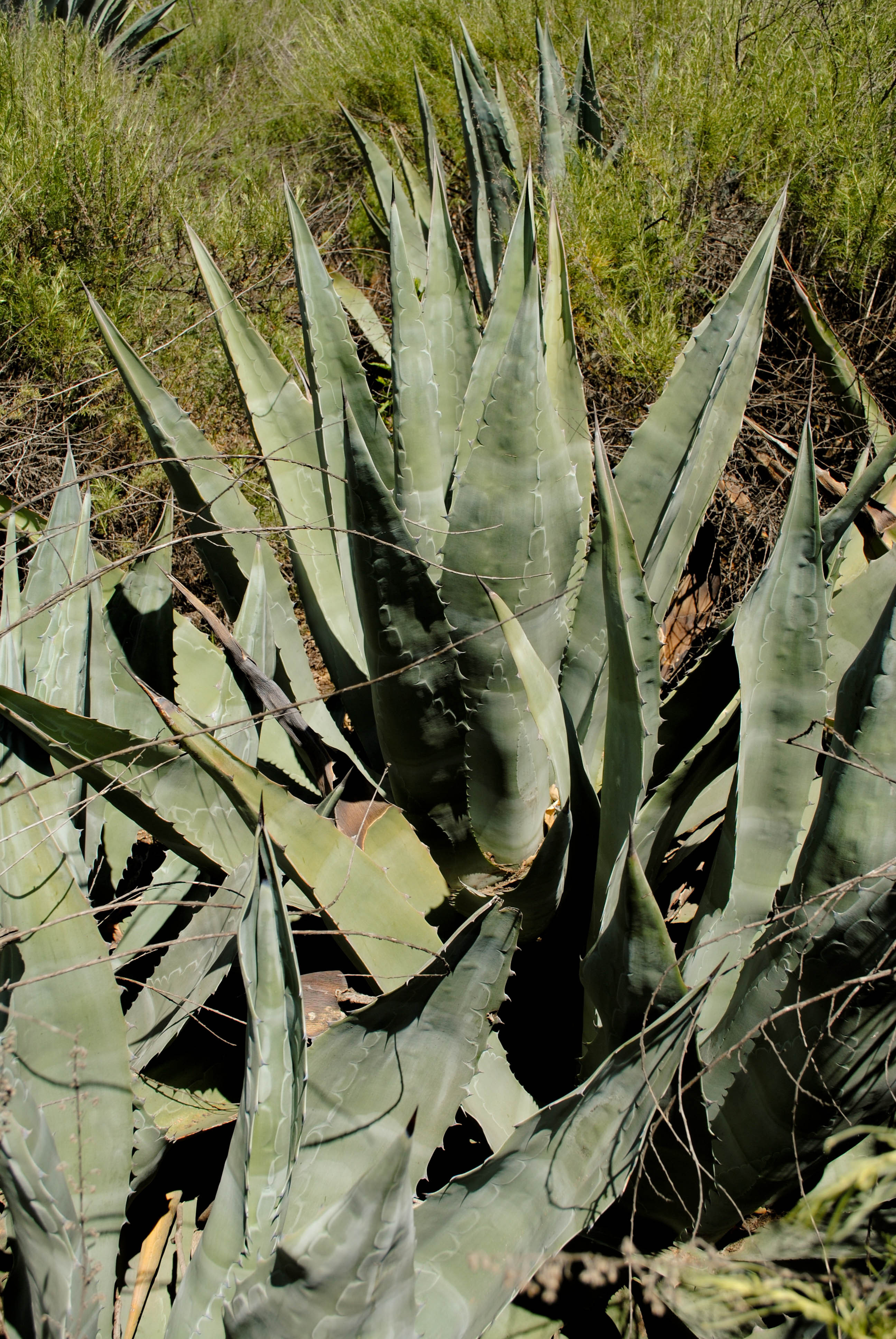Maguey Verde Grande
(Agave atrovirens)

Description
Agave atrovirens, called maguey verde grande is a type of century plant native to Oaxaca, Pueblo and Veracruz states in Mexico. It is the largest of all the Agaves, occasionally reaching a weight of two long tons (2 metric tonnes). Each succulent leaf can be up to 14 feet 9 inches (4.50 meters) in length and weigh one hundred pounds (45 kg) apiece. In the variety A. a. cochlearis these leaves can also be up to 16 inches (41 cm) wide. As in other Agaves the leaves form a rosette, from the center of which, after many years, a panicle of flowers emerges on a long scape or peduncle which at first looks like a vast stalk of asparagus, but later grows to more than forty feet (more than 12 meters) in height, develops side branches near the top and numerous flowers which open red and gradually turn yellow. Agave salmiana, the species with the tallest inflorescences, is frequently lumped with A. atrovirens as the varieties A. a. salmiana or A. a. sigmatophylla. If this is valid, then A. atrovirens also has the tallest inflorescences of any Agave, and of any known plant. Each rosette flowers and fruits once, then dies. According to Fayaz this is one of the species which makes offsets or "pups". A. atrovirens is one of the pulque agaves used in the production of mezcal. Agave is a genus of monocots native to the hot and arid regions of the Americas, although some Agave species are also native to tropical areas of South America. The genus Agave (from the Ancient Greek αγαυή, agauê) is primarily known for its succulent and xerophytic species that typically form large rosettes of strong, fleshy leaves. Agave now includes species formerly placed in a number of other genera, such as Manfreda, ×Mangave, Polianthes and Prochnyanthes. Many plants in this genus may be considered perennial, because they require several to many years to mature and flower. However, most Agave species are more accurately described as monocarpic rosettes or multiannuals, since each individual rosette flowers only once and then dies; a small number of Agave species are polycarpic. Maguey flowers are considered edible in many indigenous culinary traditions of Mesoamerica. Along with plants from the closely related genera Yucca, Hesperoyucca, and Hesperaloe, various Agave species are popular ornamental plants in hot, dry climates, as they require very little supplemental water to survive. Most Agave species grow very slowly. Some Agave species are known by the common name "century plant".
Taxonomic tree:







